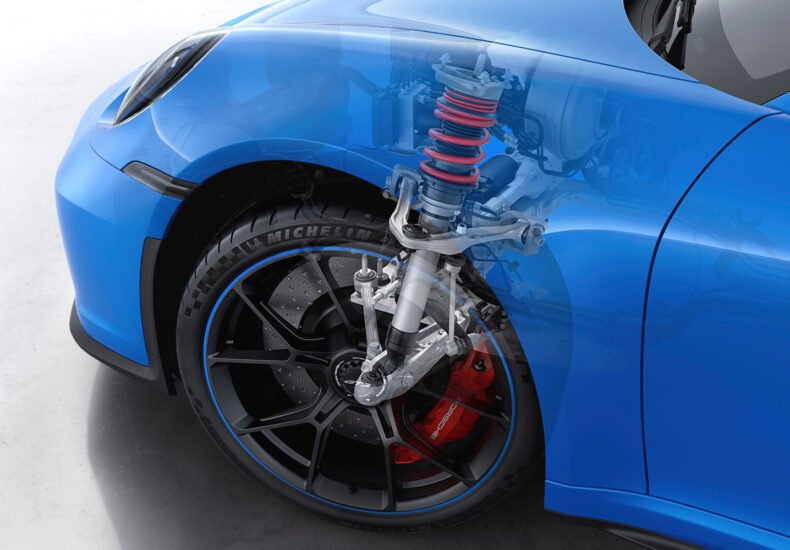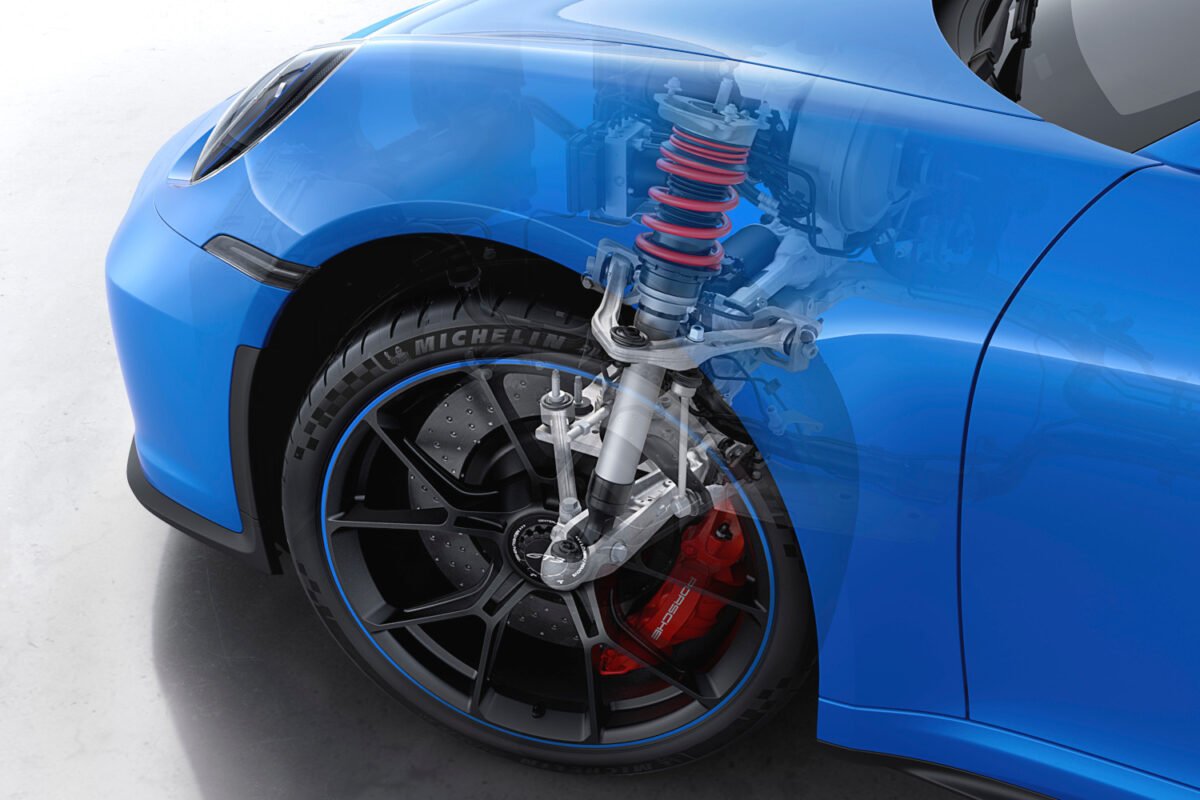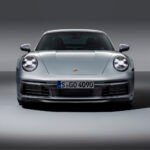
What is the Double Wishbone Suspension?
Porsche introduced the 992-generation Porsche 911 GT3 with the new double wishbone front suspension. But what is the double wishbone suspension, and how is it better? Let’s find out.
What is the Double Wishbone Suspension
The double wishbone system is an independent suspension system that features two control arms. The suspension on each wheel is independent, so the bumps in the road does not affect the other side. Many other suspension systems, like the more common MacPherson strut suspension, the double wishbone suspension features two control arms, upper and lower. Hence the name “double wishbone suspension”. Other name for this system is a double arm suspension system. But because the control arm looks a bit like the V-shaped bone of a Christmas turkey, which is called a wishbone, the control arm is known by the same name.
The double wishbone suspension was first used by the French car manufacturer Citroen and the American Packard in the 1930s. Since then, it has been featured in some high-performance models. It is also used in open-wheel racing cars, like Formula 1. Porsche first used the double wishbone front suspension setup on the RS Spyder LMP2 prototype racer in 2005. It was then adopted for the 911 RSR Le Mans class winner in 2017. The 992-generation Porsche 911 GT3 was the first Porsche 911 street car to feature this motorsport-derived technology
Advantages of the Double Wishbone Suspension
The double wishbone front axle offers numerous advantages compared with the conventional McPherson spring strut layout. It gives technicians flexibility to adjust parameters like camber, caster and toe to meet the requirements of the track or road. It offers higher camber stiffness under high compression and provides more constant support specifically for the wheel on the outside of a bend. This makes it possible to call on higher cornering force potential over the entire spring travel.
In addition, the double wishbone front axle eliminates the disturbance from lateral forces on the shock absorbers when cornering. These can lead to distortion in the form of bending loads and cause higher frictional losses. In short, the double wishbone suspension makes the sports car faster and more predictable, and improves driveability.
What about the Disadvantages?
So why don’t all cars have double wishbone front suspension? Well, there are a few drawbacks. First, it’s difficult to fit into front-wheel drive cars. Second, it’s heavier and takes up more space than a MacPherson strut suspension. And perhaps most importantly, it’s more complex. Which means it’s more expensive to manufacture and produce. And if something goes wrong, it takes much more work to fix. So unfortunately, it’s limited to the lucky few who get to enjoy it.

Image by Porsche
You may also like
Latest Additions
- 2025 Porsche 911 Carrera T – 10 Fast Facts
 The 2025 Porsche 911 Carrera T is designed to delivers pure driving pleasure and agile handling, together with an emotive soundtrack
The 2025 Porsche 911 Carrera T is designed to delivers pure driving pleasure and agile handling, together with an emotive soundtrack - 1997 Porsche Boxster – 10 Fast Facts
 For the model year 1997, Porsche unveiled a completely new mid-engined sports car. Here are 10 fast facts about the 1997 Porsche Boxster
For the model year 1997, Porsche unveiled a completely new mid-engined sports car. Here are 10 fast facts about the 1997 Porsche Boxster - What is the Type 986
 Do you know what is the type 986? If you are not familiar with the Porsche code, here is a quick guide to the type 986
Do you know what is the type 986? If you are not familiar with the Porsche code, here is a quick guide to the type 986 - Python Green 2021 Porsche 718 Cayman GTS 4.0
 What do you think about a 982 Porsche 718 Cayman in green? Check these images of a Python Green 2021 Porsche 718 Cayman GTS 4.0
What do you think about a 982 Porsche 718 Cayman in green? Check these images of a Python Green 2021 Porsche 718 Cayman GTS 4.0 - Take a Look – 2019 Porsche 911 Carrera S Exterior
 The eight generation (992) Porsche 911 Carrera is wider, more assertive, and more muscular than its predecessor
The eight generation (992) Porsche 911 Carrera is wider, more assertive, and more muscular than its predecessor - Manthey Kit for the Porsche 911 GT3 (992.2)
 For drivers who have a passion for track driving, Porsche and Manthey have developed the Manthey kit for the Porsche 911 GT3 (992.2)
For drivers who have a passion for track driving, Porsche and Manthey have developed the Manthey kit for the Porsche 911 GT3 (992.2) - 2021 Porsche 718 Cayman GTS 4.0 MT (982) Specs
 Here are the technical specifications of the 2021 Porsche 718 Cayman GTS 4.0 with the 6-speed manual transmission
Here are the technical specifications of the 2021 Porsche 718 Cayman GTS 4.0 with the 6-speed manual transmission - 2021 Porsche 718 Cayman GTS 4.0 – 10 Fast Facts
 For the 2021 model year, Porsche introduced a new variant of the 718 Cayman. Here are 10 fast facts about the 2021 Porsche 718 Cayman GTS 4.0
For the 2021 model year, Porsche introduced a new variant of the 718 Cayman. Here are 10 fast facts about the 2021 Porsche 718 Cayman GTS 4.0 - Peek Inside – 2017 Porsche 718 Cayman Interior
 The interior of the Cayman mirrors the exterior’s strong emphasis on horizontal lines. Let's peek inside the 2017 Porsche 718 Cayman interior
The interior of the Cayman mirrors the exterior’s strong emphasis on horizontal lines. Let's peek inside the 2017 Porsche 718 Cayman interior - Porsche 718 Boxster (982) Option Codes (MY2017)
 Here are the fourth generation Porsche 718 Boxster (982) option codes with descriptions from model year 2017
Here are the fourth generation Porsche 718 Boxster (982) option codes with descriptions from model year 2017
